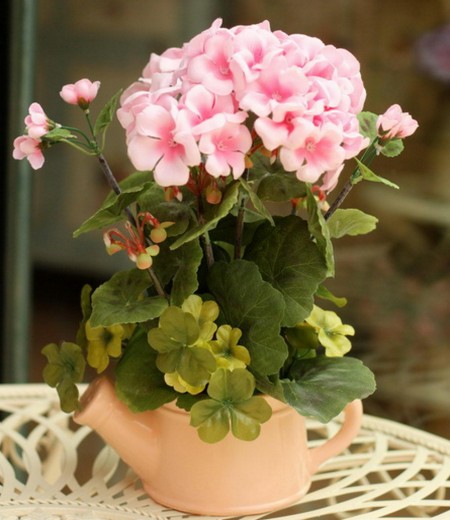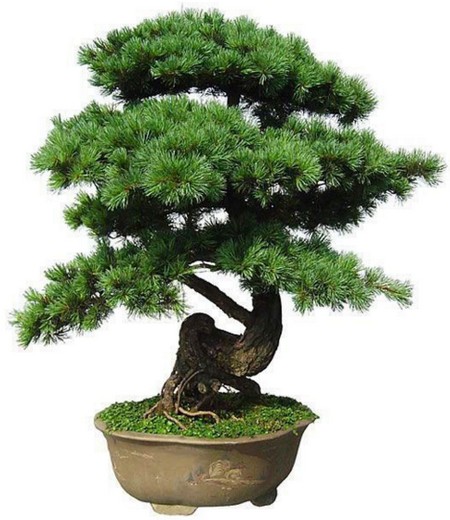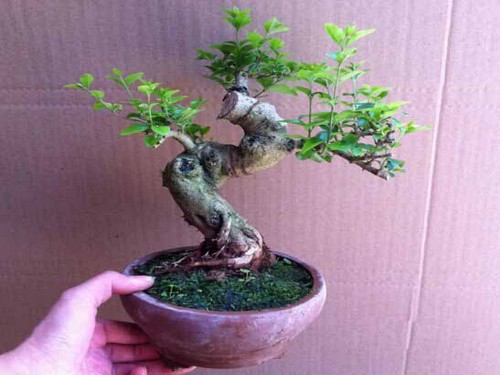Culture methods and matters needing attention of hydrangea (geranium)
Geranium is a famous ornamental plant for leaf and flower. The leaves of geraniums are usually alternate, palmately lobed or pinnately cleft, generally with long petioles, some species have deep and shallow lines on leaves, each flower has five petals, flowers gather into umbrellas, called "pseudo-umbels". Flowers are shaped from star to funnel-shaped, white, pink, red, orange, purple and even nearly black in color. It can be described as colorful and dizzying.

Many people like hydrangea very much, rich in color, pleasing to the eye, with high ornamental value, the following will introduce the breeding methods and matters needing attention of hydrangea.
Culture methods of hydrangea (geranium):
1. Soil
The planting soil of Hydrangea should be loose, fertile and well-drained sandy loam. However, the flower color is affected by soil acidity and alkalinity, acidic soil flowers are blue and alkaline soil flowers are red.
2. Temperature
The suitable temperature for the growth of Hydrangea is 18-28 ℃, and the winter temperature is not lower than 5 ℃. Flower bud differentiation takes 6-8 weeks under the condition of 5-7 ℃. The temperature of 20 ℃ can promote flowering, maintain 16 ℃ after anthesis, prolong the viewing period, and pay attention to the rapid discoloration of flowers caused by high temperature.
3. Lighting
Hydrangea is a short-day plant, usually cultivated to avoid the hot sun, 60% to 70% shade is the most ideal. When the light is too strong in midsummer, proper shading can prolong the flowering period.
4. Watering
The basin soil planted with hydrangea should be kept moist, but it should not be watered too much, especially in the rainy season to prevent rotting roots caused by waterlogging. It is better to dry indoor potted plants in winter. If it is too wet, the leaves will rot easily.
5. Fertilization
The flowering period of Hydrangea is from June to July. During the flowering period, there should be sufficient fertilizer and water, and fertilizer should be applied once every semimonthly.
6. Pruning
After the hydrangea blossoms, we should pay attention to remove the flower stem, promote the production of new branches, proper pruning, can keep the plant shape beautiful.
7. Insect pests
Hydrangea is mainly caused by wilt, powdery mildew and leaf spot. Spray control with 65% Dysen zinc wettable powder 600 times solution. Insect pests are harmful to aphids and bug bugs and can be sprayed with 1500 times of omethoate EC.
Note:
(1) Hydrangea prefers acid soil and is not resistant to barren and saline-alkali soil. In alkaline soil, the growth is poor and the branches and leaves are yellow. it is suitable for the acid soil which is loose, fertile and rich in humus. Its flower color can change from white to red and from red to cyan due to the influence of pH.
(2) when moving into the room in the first and middle of October, it is necessary to control watering and keep the room temperature at about 5 ℃ to promote its dormancy. Remove the leaves before entering the room to avoid rotten leaves. From the middle of December, it moved to the sunny place, keeping the temperature 15: 20 ℃, promoting the growth of branches and leaves, and leaving the chamber in late April of the following year.
(3) in the annual growth period, it can be topped twice to promote branching. After flowering, the old branches were kept lumb2 nodes and cut short to control the plant height and promote the growth of new branches. Cut off the top of the new shoots after autumn to stop the branches from growing so as to survive the winter.
(4) the seedlings cut in March can be moved into a 10 cm basin after rooting, and then planted in a 16 cm basin in the middle of June. The heart was picked for the first time in June. If the heart is plucked in early June, flower buds can be formed in the middle of August. The seedlings cut from May to June can be planted in 16 cm pots from July to August. In order to promote the formation of flower buds in that year, the last heart picking must be before September, otherwise the flower buds can not be formed in the same year.
Time: 2019-06-01 Click:
- Prev

How to raise Penglai pine? Culture method of Penglai pine
Penglai pine, also known as pine bamboo grass, the plant is very beautiful, dense leaves, spherical shape, beautiful leaves, green and elegant. Its leaves are thick green and dense, it is the most popular flower arrangement foil material, and many homes like to plant this plant, so how to keep Penglai pine? What are the breeding methods of Penglai pine?
- Next

How to raise small privet bonsai?
The shape of Ligustrum lucidum has unique ornamental and artistic features. Large plant shapes are planted in the square and open lawn of the park, which play a role in emphasizing the theme and setting off the atmosphere. On both sides of the main roads in the park, green hedges, cloud walls and dragon walls are made.
Related
- Fuxing push coffee new agricultural production and marketing class: lack of small-scale processing plants
- Jujube rice field leisure farm deep ploughing Yilan for five years to create a space for organic food and play
- Nongyu Farm-A trial of organic papaya for brave women with advanced technology
- Four points for attention in the prevention and control of diseases and insect pests of edible fungi
- How to add nutrient solution to Edible Fungi
- Is there any good way to control edible fungus mites?
- Open Inoculation Technology of Edible Fungi
- Is there any clever way to use fertilizer for edible fungus in winter?
- What agents are used to kill the pathogens of edible fungi in the mushroom shed?
- Rapid drying of Edible Fungi

